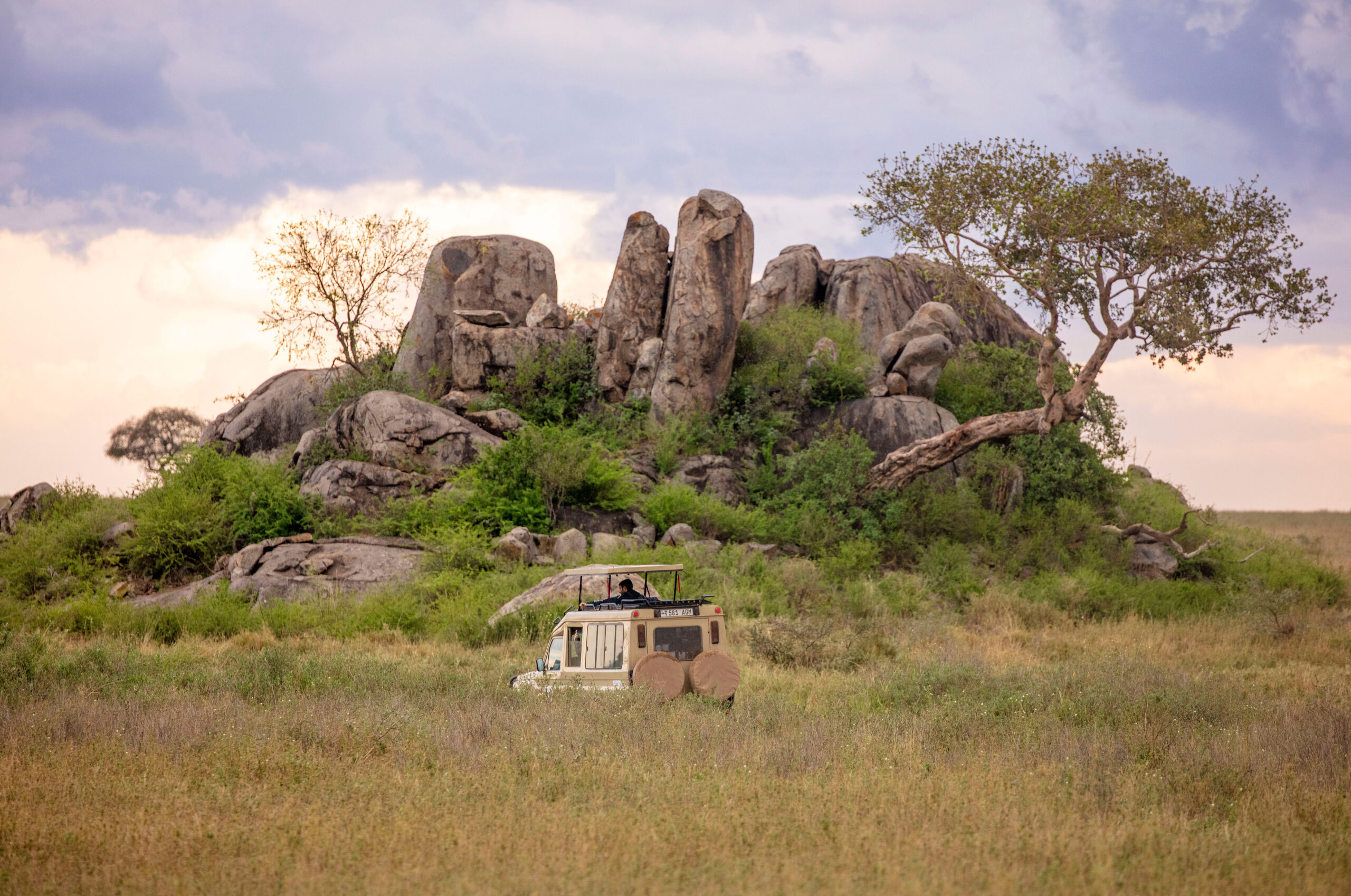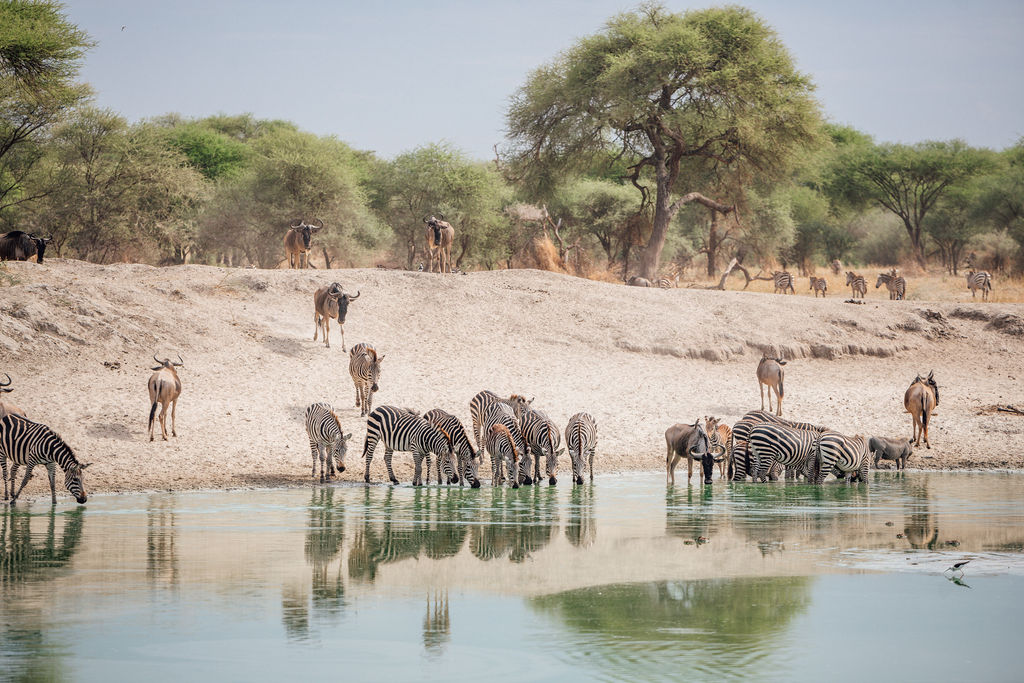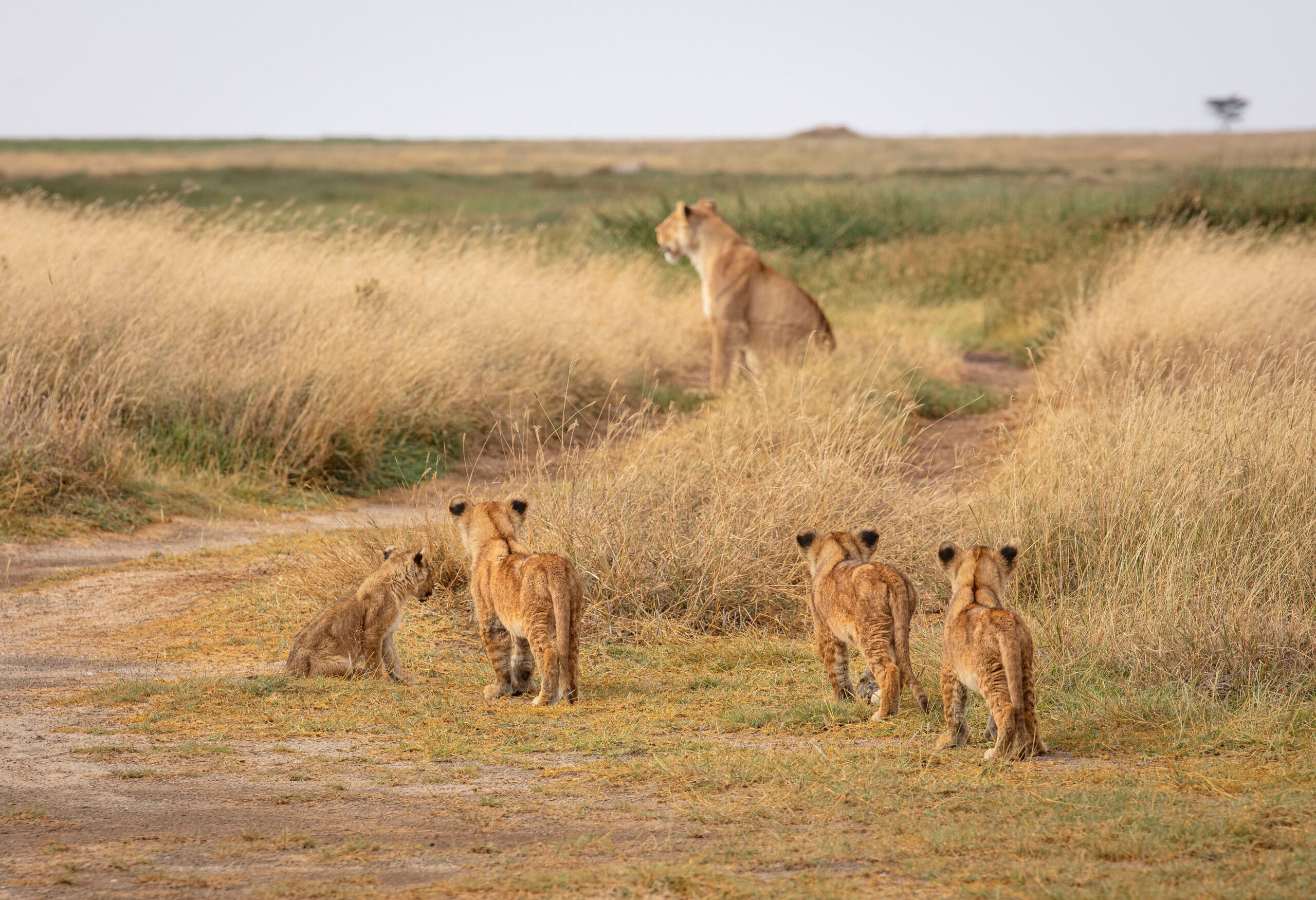NGORONGORO CONSERVATION AREA
- Best Time: All Year
- High Season: July to September
The Ngorongoro Conservation Area, located in northern Tanzania, is a UNESCO World Heritage Site and one of Africa’s most iconic destinations. At its heart lies the Ngorongoro Crater, a massive volcanic caldera formed over two million years ago. Often referred to as the “Eighth Wonder of the World,” the crater is the largest unbroken and unflooded caldera on the planet, spanning about 260 square kilometers (100 square miles) and reaching depths of over 600 meters (1,970 feet). The area is a unique blend of wildlife, stunning landscapes, and cultural heritage, home to the Maasai people who coexist with the wildlife in this protected ecosystem.
The Ngorongoro Crater is a wildlife paradise, boasting one of the highest concentrations of animals in Africa. It’s a self-sustaining ecosystem where you can spot the Big Five (lion, leopard, elephant, buffalo, and rhino) as well as zebras, wildebeests, hippos, and flamingos. The conservation area also includes the Olduvai Gorge, a significant archaeological site where some of the earliest human fossils were discovered.
The Ngorongoro Conservation Area enjoys a moderate climate due to its high elevation. The crater rim sits at about 2,200 meters (7,200 feet) above sea level, making it cooler than the surrounding plains. Temperatures typically range from 10°C (50°F) at night to 23°C (73°F) during the day.
The area experiences two main seasons:
- Dry Season (June to October): This is the best time for wildlife viewing, as animals gather around water sources. The skies are clear, and the weather is pleasant.
- Wet Season (November to May): The landscape turns lush and green, with April and May being the peak of the rainy season. While the rains can make some roads muddy, this is a great time for birdwatching and seeing newborn animals.
Things to Do
- Game Drives in the Crater: Descend into the crater for an unforgettable safari experience. The dense wildlife population ensures incredible sightings, from lions hunting to rhinos grazing.
- Visit Olduvai Gorge: Explore the “Cradle of Mankind,” where some of the oldest human fossils were discovered. The on-site museum provides fascinating insights into human evolution.
- Cultural Tours with the Maasai: Engage with the Maasai people, visit their villages, and learn about their traditional way of life, customs, and rituals.
- Hiking the Crater Rim: Take a guided walk along the crater rim for breathtaking views and a chance to spot birds and smaller wildlife.
- Explore Empakaai Crater: A lesser-known but equally stunning crater within the conservation area, perfect for hiking and spotting flamingos on the alkaline lake.
- Birdwatching: With over 500 bird species, including flamingos, eagles, and ostriches, the area is a bird lover’s paradise.
Best Time to Visit
The best time to visit the Ngorongoro Conservation Area depends on your preferences:
- June to October: Ideal for wildlife viewing, with clear skies and minimal rainfall.
- December to February: A great time for birdwatching and enjoying the lush greenery after the short rains.
- March to May: The low season, offering fewer crowds and lower prices, though some areas may be harder to access due to heavy rains.
Getting to Ngorongoro
The Ngorongoro Conservation Area is easily accessible from major Tanzanian destinations:
- By Air: The nearest airstrip is Lake Manyara Airport, about 60 kilometers (37 miles) away. From there, you can arrange a transfer to the crater.
- By Road: The area is a 3-4 hour drive from Arusha, the gateway to Tanzania’s northern safari circuit. Many visitors combine a trip to Ngorongoro with visits to Serengeti National Park and Tarangire National Park.
Where to Visit & Stay
- Ngorongoro Crater: The main attraction, offering unparalleled wildlife viewing.
- Olduvai Gorge: A must-visit for history and archaeology enthusiasts.
- Empakaai Crater: A quieter alternative for hiking and birdwatching.
- Maasai Villages: Experience the rich culture and traditions of the Maasai people.
Accommodation Options:
- Luxury Lodges: Ngorongoro Crater Lodge and &Beyond’s Neptune Ngorongoro Luxury Lodge offer opulent stays with stunning views.
- Mid-Range Options: Ngorongoro Serena Safari Lodge and Ngorongoro Sopa Lodge provide comfortable stays on the crater rim.
- Budget Campsites: Public campsites like Simba Campsite offer basic facilities for budget travelers.
Suggested Ngorongoro Tours

Private Tour
Mid-range
Lodge & Tented
5/5 (10 Reviews)
- 5 Days
You Visit: Zanzibar (Start), Mikumi National Park, Zanzibar (End)

Private Tour
Mid-Range
Lodge & Tented
5/5 (07 Reviews)
- 5 Days
You Visit: Arusha(Start), Serengeti National Park, Ngorongoro, Arusha (End)

Private Tour
Mid-Range
Lodge & Tented
5/5 (12 Reviews)
- 2 Days
You Visit: Arusha (Start), Ngorongoro Crater Tarangire National Park, Arusha (End)
